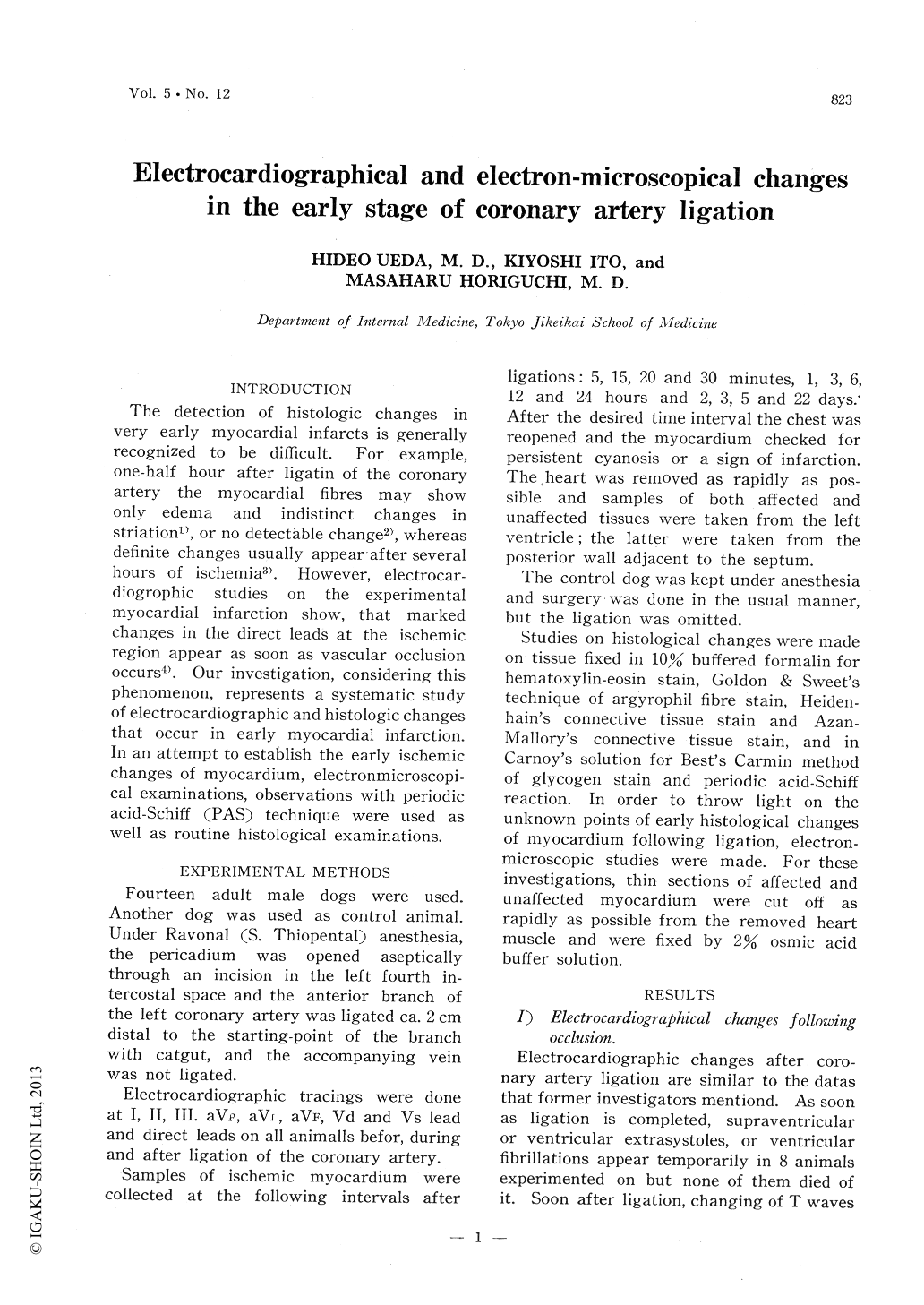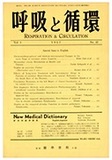- 有料閲覧
- 文献概要
- 1ページ目
Electrocardiographic and morphological changes in the early myocardial infarction were presented in 14 adult male dogs.
1) On even the earliest stage of myo-cardial ischemia, when hiterto, a detectable change has never been recognized in the histological examination, remarkable pat-hological changes of the myocardium i.e. swelling of mitochondrias, destruction of myofibrills, lightending of sarcoplasma and intacellular edema appear on the electron-microscopic figures.
2) Comparing electrocardiographical al-terations with histological changes in early myocardial infarction, the more intense the myocardial swelling and edema of the affected region progress, the larger the PS-T segment deviation in E.C.G. becomes ; then the severer the coagulation necrosis, the smaller the RS-T segment deviation. The "cove-plane T wave" or the "coronary T wave" in electrocardiogram developes at the end of the coagulation necrosis stadium of morphological examination.
3) It seems that stages of electrocardio-graphic alterations after coronary occlusion correspond to stadiums of morphological changes in the affected myocardium in our experiment : i, e, on the acute stage of electrocardiographic examination, the myocardium shows the figure of the initial stadium of the coagulation necrosis stadium of histological examination ; on the subacute stage of E.C.G., the stadium of cellular infiltration ; on the chronic stage of E.C.G., the stadium for healing, respectively.
Prof. F. Takagi, Director of the Department of Pathology, Tokyo Jikeikai School of Medicine, provided technical assistance on the electronmi-croscopical examination in this experiment.

Copyright © 1957, Igaku-Shoin Ltd. All rights reserved.


